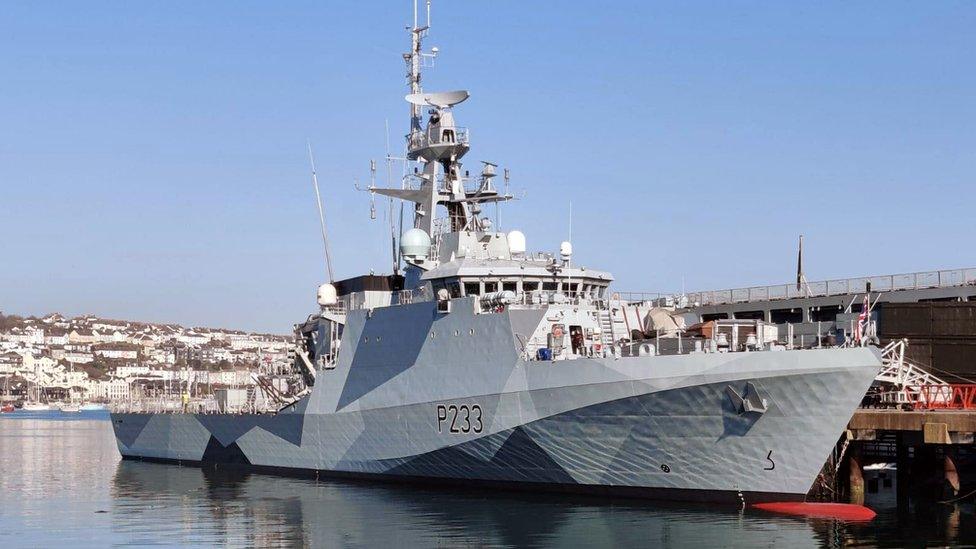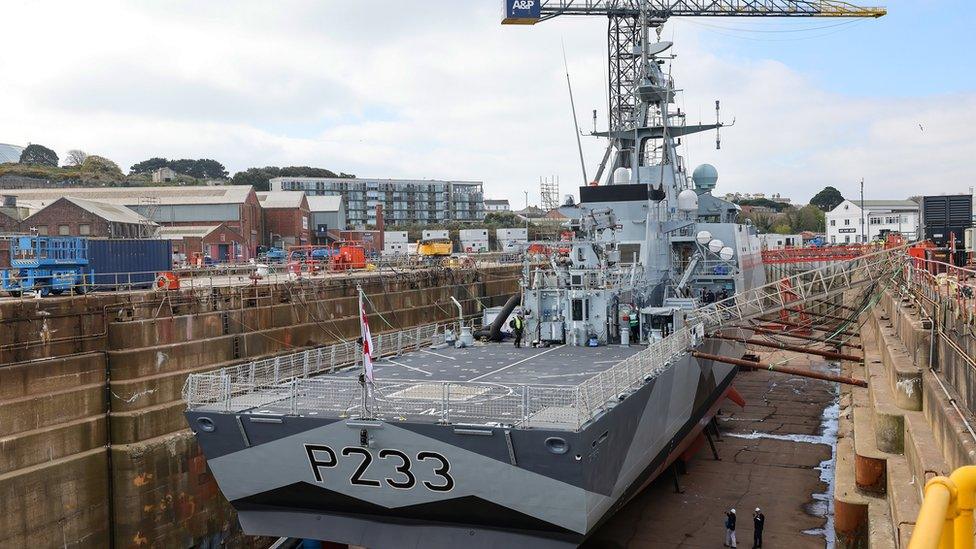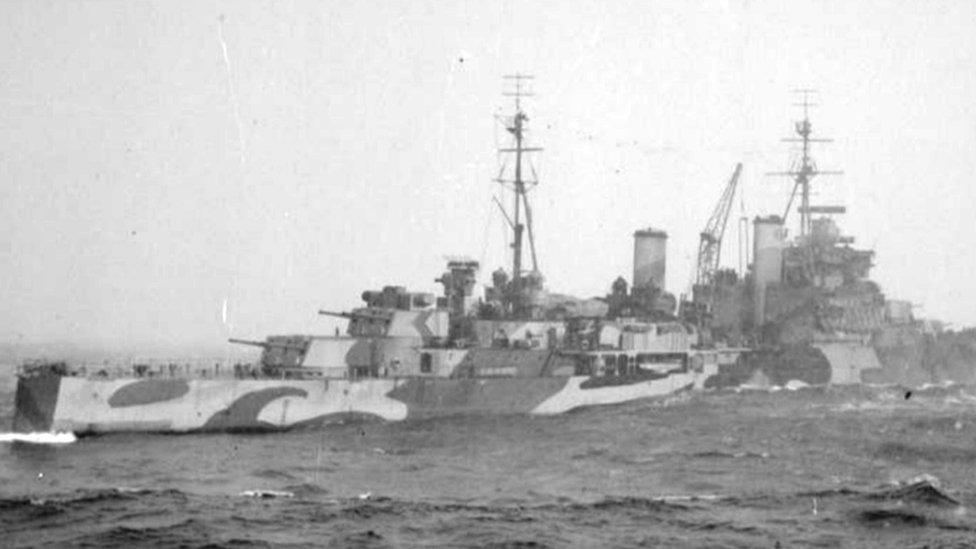Dazzle paint job for Royal Navy warship HMS Tamar
- Published

New patrol ship HMS Tamar will head to the Asia-Pacific region with a dazzle camouflage paint scheme
An "iconic" paint scheme has been applied to a Royal Navy ship for the first time since World War Two.
New patrol ship HMS Tamar will deploy to the Asia-Pacific region with a so-called "dazzle camouflage" paint job.
Shipwrights in Falmouth, Cornwall used 200 litres of paint in four shades of grey and black to recreate the design.
The paint job has been done to give the ship a "distinct identity", the Royal Navy said.
Captain of HMS Tamar, Lieutenant Commander Michael Hutchinson, said: "Different styles of dazzle were used by the Royal Navy on ships in various stations throughout the world and we are pleased to have been given an iconic new look before we deploy in the summer."

Shipwrights at A&P Falmouth recreated the dazzle design using four shades of paint
The paint style was first introduced by the Royal Navy towards the end of World War One.
With Britain struggling to deal with the U-boat threat, artist and sailor, Norman Wilkinson, came up with the idea of confusing U-boat skippers during patrols out of Plymouth.
The contrasting shapes, angles and colours were devised to make it difficult for submariners to gauge the ship's direction of travel and speed.
This caused them to either delay long enough to give away their position, or miss their target when firing a torpedo.

Many Royal Navy ships were given dazzle camouflage including cruiser HMS Trinidad, pictured here on an Arctic convoy in 1942
More than 2,000 ships received the unusual livery by 1918 with the concept used once again during World War Two.
Dazzle camouflage was phased out by the Royal Navy after 1945.
Commander David Louis of the Overseas Patrol Squadron, said "Dazzle has much less military value in the 21st Century" but "it is very much more about supporting the unique identity of the squadron within the Royal Navy."
Related topics
- Published12 June 2014